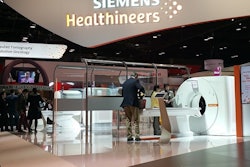With more than 90% accuracy in the localization of parathyroid lesions, 4D CT has recently emerged as the go-to method for preoperative imaging of the parathyroid, Dr. Devasenathipathy Kandasamy told AuntMinnie.com. This imaging modality, however, has the major disadvantage of requiring a notable dose of radiation (around 10 mSv).
"We wanted to explore an alternative modality with a similar accuracy but without the radiation penalty," he said.
In their prospective study, Kandasamy and colleagues from the All India Institute of Medical Sciences in New Delhi compared the precision of ultrasonography, 4D CT, 4D MRI, and Tc-99m MIBI SPECT in detecting and locating the parathyroid lesions of 39 patients with primary hyperparathyroidism.
Ultrasonography and Tc-99m MIBI SPECT both resulted in approximately 81% sensitivity, whereas 4D CT and 4D MRI both achieved 100% sensitivity. Moreover, 4D MRI did not produce artifacts from photon starvation the way that 4D CT occasionally does.
"4D MRI can be an alternative or first-line modality in the evaluation of primary hyperparathyroidism in the future," Kandasamy said. "It will be more relevant in young patients where radiation dose is a concern."



















